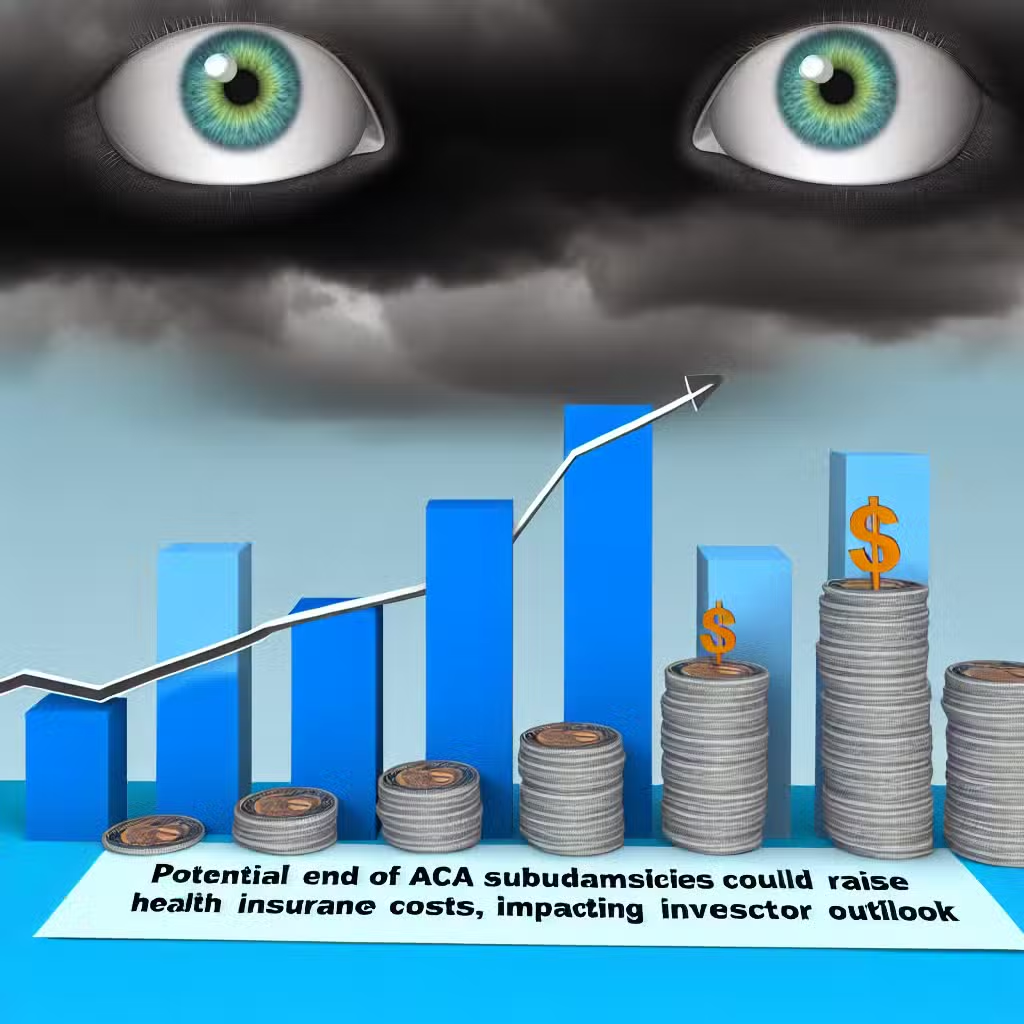Potential End of ACA Subsidies Could Raise Health Insurance Costs, Impacting Investor Outlook
Imagine your grocery bill suddenly tripling overnight. That’s what millions of Americans could face with their health insurance next year if special discounts, called subsidies, go away. This isn’t just about paying more — it could change how families budget, save, and even work.
What’s Happening with Health Insurance Costs?
Right now, about 22 million people get help from the government to make their health insurance cheaper. This help is called an “enhanced subsidy.” If Congress doesn’t agree to keep these subsidies, insurance bills could double or even triple for many families in 2026.
For example, Ashley Thompson from Texas might see her family’s health plan jump from $1,200 to $3,553 a month. That’s like paying for a new car every single month — just to have insurance.
Why Investors Should Care
- Health care is a huge part of the U.S. economy, making up about 18% of GDP (CMS.gov).
- When millions have to pay more for insurance, they may cut spending elsewhere, which can hurt retail, travel, and other sectors.
- Health insurers, hospitals, and drug companies could see more people drop coverage, affecting their profits and stocks.
The Bull Case: Why Keeping Subsidies Helps
- Stability for families: More people can afford coverage, leading to healthier communities and fewer unpaid hospital bills.
- Good for insurers: When more people buy insurance, companies have a bigger customer base, which can help keep prices steadier.
- Positive economic ripple: Families with affordable insurance can spend more on other things, boosting the economy.
The Bear Case: Why Subsidies Might Go Away
- Government spending: Subsidies cost billions. Some argue the country can’t afford to keep them forever.
- Political gridlock: Congress is divided. Some leaders want to handle subsidies separately from other government spending.
- Work disincentive: If earning a little more money means losing all your subsidy, some people might work less to stay eligible. This is called the “subsidy cliff.”
What Happens If Subsidies Expire?
Without the extra help, the average person getting a subsidy could see their yearly insurance cost jump 114% — from $888 to $1,904, according to KFF, a respected health policy group.
Some will face an even steeper climb. A 60-year-old couple making just over $85,000 could pay $23,000 more per year. That’s a huge hit for anyone’s budget.
The Congressional Budget Office says about 4 million more people could go without insurance over the next decade if these subsidies disappear (CBO.gov).
Real People, Real Choices
- Some families may only insure their kids, or pick cheaper plans with higher out-of-pocket costs. These plans often mean big bills if you get sick or hurt.
- Others, like early retiree Beth Keenan, say they’ll just cut back on things like travel to pay the higher premiums, but worry about what happens if costs keep rising.
- People near the income cutoff — the “subsidy cliff” — may even work less to keep their insurance affordable. For example, if you make $65,000 instead of $60,000, your insurance could go from $461 to $818 a month.
Historical Perspective
This isn’t the first time Americans have faced health insurance “sticker shock.” Before the Affordable Care Act (ACA) in 2010, millions were uninsured because they simply couldn’t afford it. The ACA and its subsidies helped lower the number of uninsured from 16% in 2010 to about 8% in 2022 (Census.gov).
Investor Takeaway
- Watch health insurer stocks: Companies like UnitedHealth, Anthem, and Centene could see big swings depending on what Congress decides.
- Monitor consumer sectors: If families spend more on insurance, they may spend less elsewhere, which could affect retail and travel stocks.
- Prepare for volatility: Political fights over health care can cause market swings. Diversify your holdings to manage risk.
- Follow the data: Pay attention to enrollment numbers and premium changes. These are early clues for sector impacts.
- Stay informed: Congress has until the end of the year to act. Keep an eye on credible news sources for updates.
For the full original report, see CNBC







